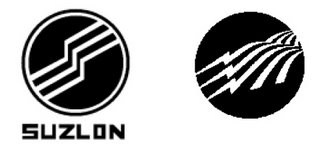TTAB Dismisses 2(d) Opposition: Marks Similar but Goods and Services, Trade Channels, and Purchasers Too Different
Despite the strength of General Cable's "Roleaux" mark (below right), and the similarity between that mark and National Rural's design mark (below left), the Board dismissed this Section 2(d) opposition. It found National Rural's services so different from General's goods and services, the channels of trade and classes of customers so different, and the potential purchasers so knowledgeable and careful, that confusion is not likely. General Cable Technologies Corporation v. National Rural Electric Cooperative Association, Opposition No. 91165554 (June 25, 2009) [not precedential].

National Rural sought to register its mark for "promoting the interests of electric cooperatives by promulgating standards for uniform data formatting for facilitating the transfer of data between software applications." General Cable relied on its registered "Roleaux" design mark for wires, cables, and related products and services.
General Cable claimed that its mark is famous, but despite use of the mark since 1927, more than $5 billion in sales of wire and cable during the period 2003-2007, extensive advertising, and ranking as the largest supplier of energy cable in the United States, its proof fell short. The problem was that General Cable primarily displays the "Roleaux" mark adjacent the words "General Cable," and there was no evidence that the design has any renown independent of the trade name. The Board did, however, find that the mark to be "strong and distinctive."

As to the marks, the Board spent little energy in finding them to be similar in overall impression ("intersecting arcs forming a circular triangle").
As to the goods/services, on their faces, General Cable's products and services and National Rural's services (essentially trade association services for electric utilities in the nature of promulgating data transfer services) are different in character and use. Although both sell their goods/services to electric cooperatives, "that does not change the distinctly different character and use of their goods and services." The Board found no evidence that the goods and services of the parties "will come to the attention of the same types of actual or potential consumers or users suggesting a common origin."
The Board noted that Opposer and Applicant attend the same trade shows and place advertisements in the same publications, and at one show the involved marks were displayed at adjacent booths. General Cable claimed that the channels of trade and classes of consumers are identical.
The problem with opposer's argument is that opposer presumes that the same people who buy wire and cable for an electric cooperative are also involved with the software used by electric cooperatives. There is no evidence regarding the organization of electric cooperatives that establishes that the persons in charge of information technology are also responsible for purchasing wire and cable. Considering the obvious complexity involved in distributing electricity and managing an electric cooperative, it is inconceivable that the individuals in charge of information technology are also involved with the purchasing of wire and cable.
Indeed, the Board found no evidence that the same people in charge of information and technology are the same people who purchase wire and cable. Therefore, it concluded that the channels of trade and classes of consumers are different, despite the fact that the involved goods and services are marketed to electric cooperatives through the same media.
Turning to the degree of consumer care, the Board found that the involved purchasers exercised "careful consideration" and are "knowledgeable about the goods and services and their source."
Finally, the lack of any reported incidents of actual confusion, according to the Board, supported its finding that the trade channels and classes of customers are different.
Balancing the relevant du Pont factors, the Board found no likelihood of confusion, and it therefore dismissed the opposition.
TTABlog comment: I don't find the marks to be that similar, do you? Applicant's mark reminds me of a stylized drawing of an atom or molecule or something of that ilk. Opposer's mark reminds me of a camera lens.
Three years ago, National Rural was on the losing end of another inter partes battle over two design marks, when it sought to cancel a registration for the mark shown below left, based on its mark shown below right. The Board found the similarity between the marks to be "not great," in large part because of the inclusion of the word SUZLON in the challenged mark. (TTABlogged here).

Text Copyright John L. Welch 2009.




1 Comments:
They don't appear that similar in a side-by-side comparison. However, I think the similarity is great enough to believe the marks could be confused in the wild.
Post a Comment
<< Home